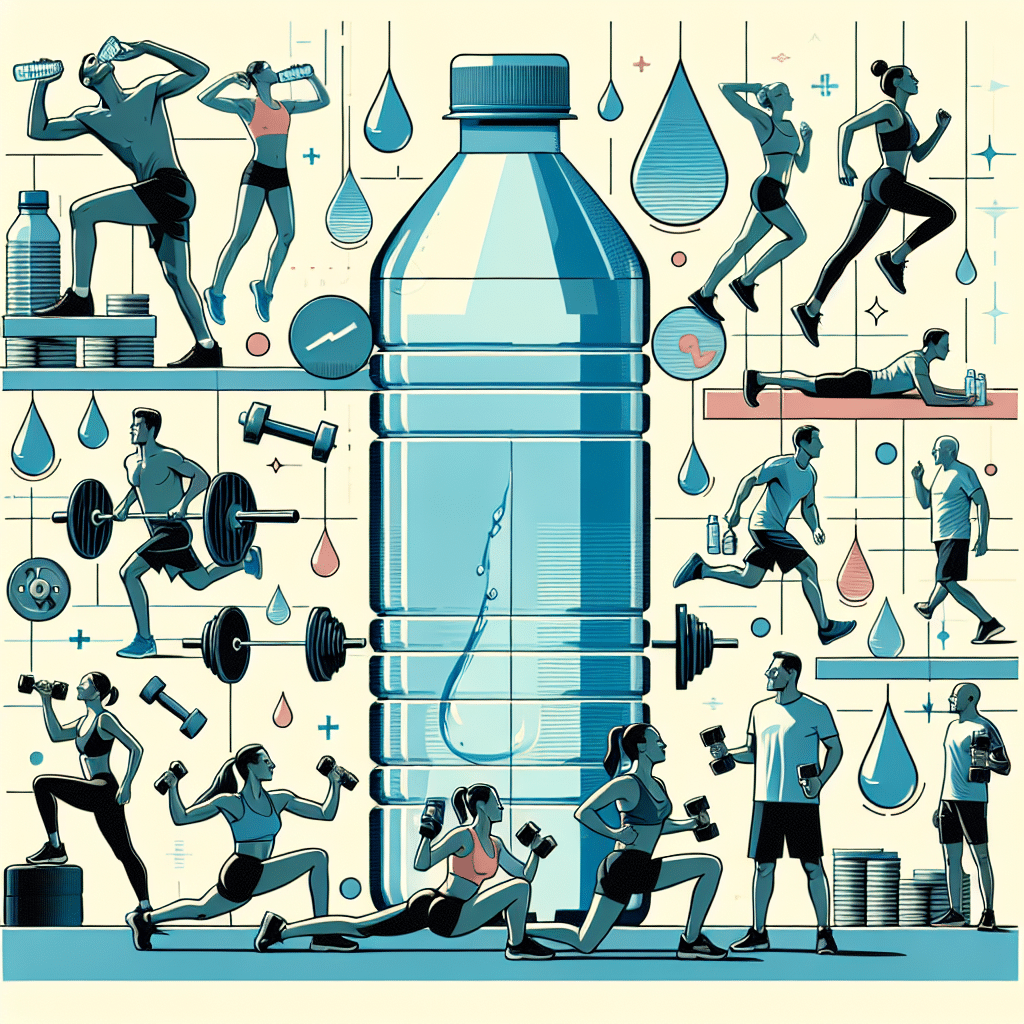Understanding Water Intake for Fitness Enthusiasts
1. The Importance of Hydration in Fitness
Hydration plays a vital role in physical fitness, influencing performance, recovery, and overall health. Water makes up about 60% of the human body and is crucial for various physiological functions, including temperature regulation, nutrient transportation, and joint lubrication. For fitness enthusiasts, maintaining optimal hydration levels significantly enhances performance and aids recovery.
2. Daily Water Intake Recommendations
While the commonly cited guideline is to drink eight 8-ounce glasses of water daily (known as the “8×8 rule”), the actual water needs vary based on several factors including age, gender, climate, and physical activity levels. The National Academies of Sciences, Engineering, and Medicine recommends a daily water intake of:
- Men: About 3.7 liters (or 13 cups)
- Women: About 2.7 liters (or 9 cups)
These recommendations include all beverages consumed and food intake, as many foods contain water.
3. Factors Influencing Hydration Needs
Understanding personal hydration needs is critical for fitness enthusiasts, and several factors can influence how much water is necessary:
-
Exercise Intensity and Duration: Intense workouts lead to greater fluid loss through sweat, requiring increased water intake. For sessions lasting over an hour, incorporating an electrolyte-rich drink can further assist hydration.
-
Weather Conditions: Hot and humid environments can increase perspiration rates, necessitating additional water intake. Conversely, cold weather may disguise dehydration as the body loses moisture through breathing.
-
Body Composition: Individuals with higher muscle mass may require more water than those with a higher fat percentage due to muscle being composed of roughly 75% water.
-
Dietary Choices: High protein and high-salt diets demand more water to process and excrete wastes, leading to increased hydration needs.
4. Signs of Dehydration to Watch For
Monitoring hydration status is critical. Key signs of dehydration include:
- Thirst: A primary indicator that your body needs more fluids.
- Dark yellow urine: Normal urine should be pale yellow. Darker hues suggest dehydration.
- Fatigue and dizziness: Often accompanied by reduced performance and concentration levels.
- Dry mouth or skin: An obvious indicator that water intake is low.
5. Strategies for Maintaining Hydration
To optimize hydration as a fitness enthusiast, consider these strategies:
-
Start Early: Begin your day with a glass of water upon waking to jumpstart hydration. Aiming for 500 ml in the morning can set a positive tone for the day.
-
Hydrate Before, During, and After Workouts: Aim to drink water before your workouts (about 500 ml 2-3 hours prior), during (200-300 ml every 15 minutes), and after (again, about 500-750 ml) to replenish lost fluids.
-
Track Your Intake: Use mobile apps or a water bottle with measurements to monitor daily water consumption.
-
Incorporate Water-Rich Foods: Foods like cucumbers, tomatoes, and watermelon can contribute to hydration. Seek meals that contain high water content as part of your dietary plan.
6. Using Electrolytes for Optimal Hydration
For long or intense workouts, plain water may not suffice. Electrolyte solutions containing sodium, potassium, and magnesium can replenish essential minerals lost through sweat. Consider sports drinks or electrolyte tablets to maintain balance, especially in workouts exceeding one hour.
-
When to Use Electrolytes: During endurance training or sports that last longer than 90 minutes, or in hot, humid environments.
-
Potassium and Sodium: Maintaining the right sodium and potassium levels is crucial for effective muscle function and recovery.
7. Customizing Your Hydration Plan
Each fitness enthusiast is unique. It’s essential to:
-
Perform a Sweat Test: Weigh yourself pre- and post-exercise to see how much fluid you’ve lost. This will provide insight into how much water (and electrolytes) you need to replace.
-
Consider Personal Preferences: Some may find plain water boring; try infusing it with fruits, herbs, or cooling beverages to enhance taste without adding sugar.
-
Create a Routine: Incorporate water intake into your daily routine. Setting reminders can help maintain hydration consistency.
8. The Role of Hydration in Recovery
Post-exercise hydration is crucial for recovery. It aids muscle repair and reduces soreness. Strategies include:
-
Replenishing Fluids: After workouts, aim to consume fluids as opposed to just water. Nutritional drinks can aid in recovery due to their carbohydrate and protein content.
-
Restoring Electrolytes: Consider incorporating high-salt foods or balanced electrolyte drinks post-exercise to recover energetic reserves and support muscle function.
9. Listening to Your Body
Intuitive hydration involves paying attention to your body’s signals. While guidelines provide a starting point, individuals should adjust their intake based on physical demands:
- If you’re feeling thirsty, drink more.
- Monitor physical responses during workouts; fatigue can often be linked to inadequate fluids.
10. Conclusion
Fitness enthusiasts should prioritize hydration as a fundamental element of their training regimen. By understanding their hydration needs, monitoring intake, and considering factors like exercise intensity and environmental conditions, athletes can enhance their performance and supportive recovery through effective fluid management.
